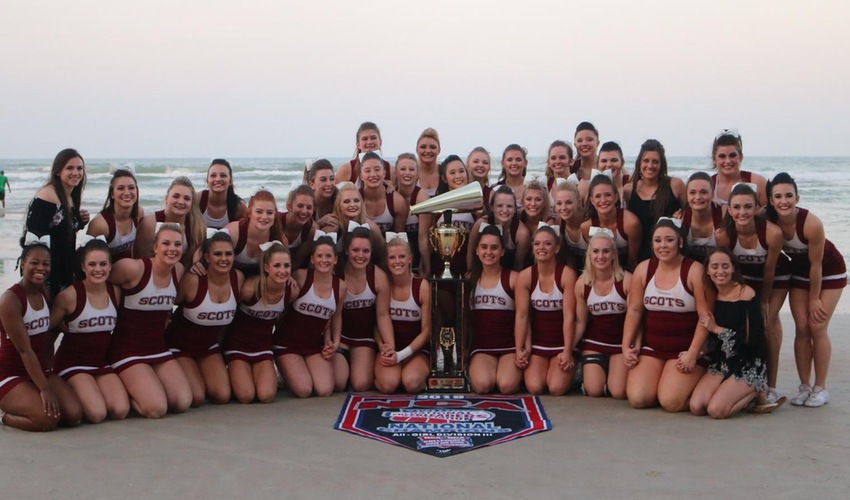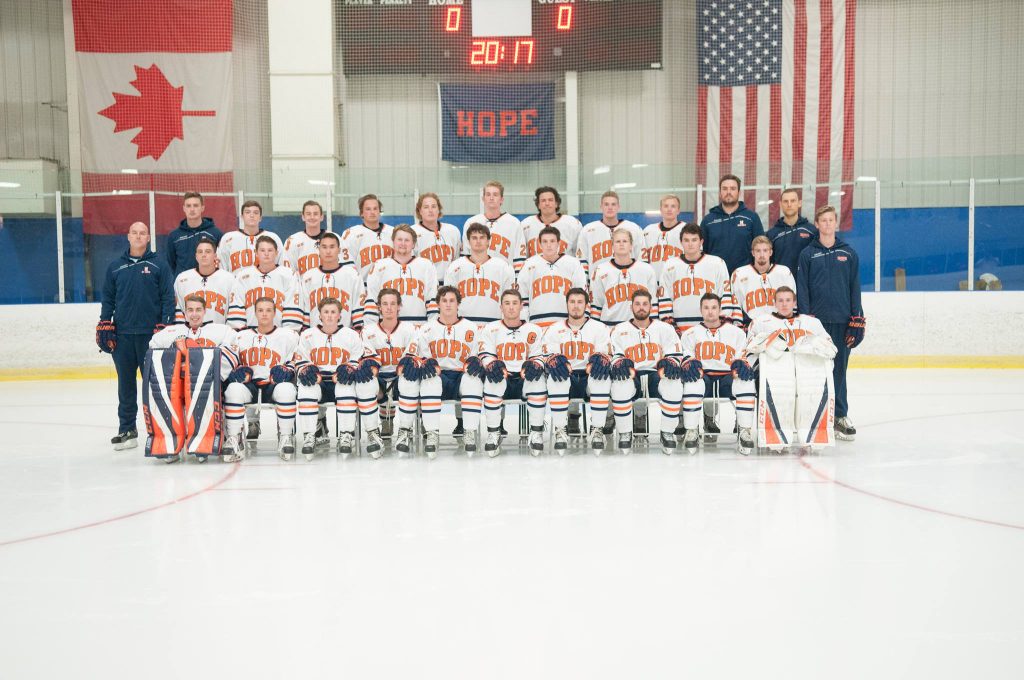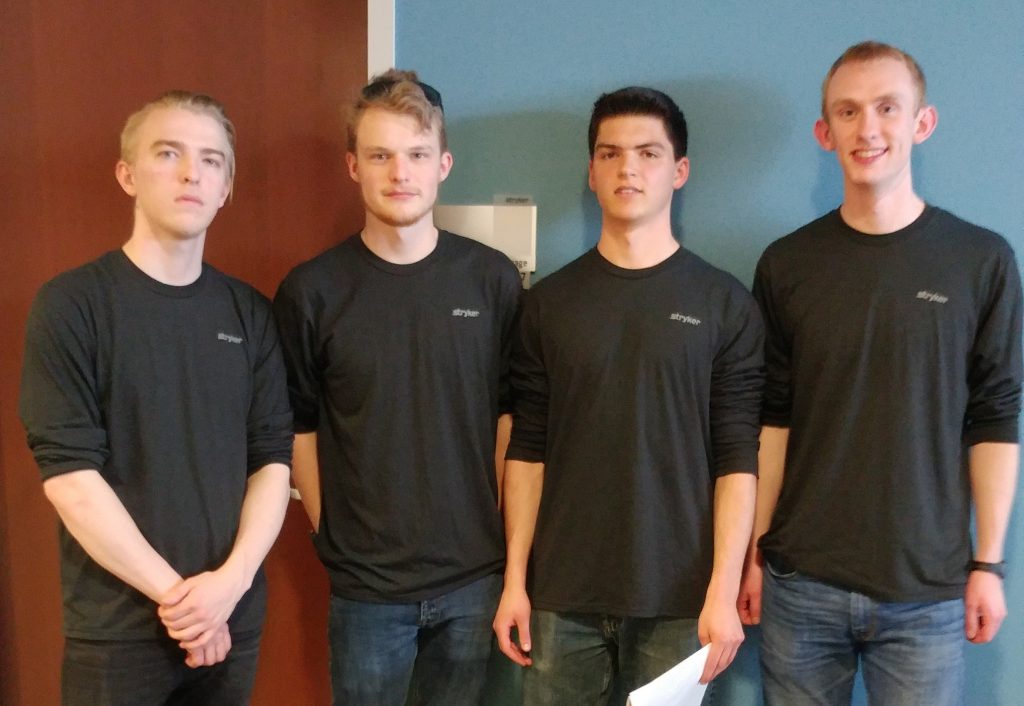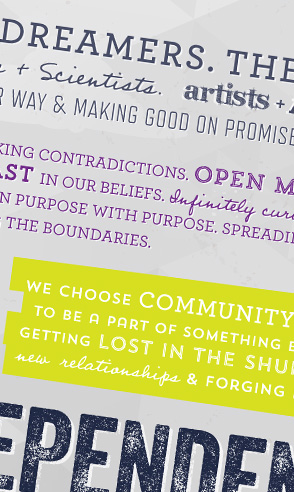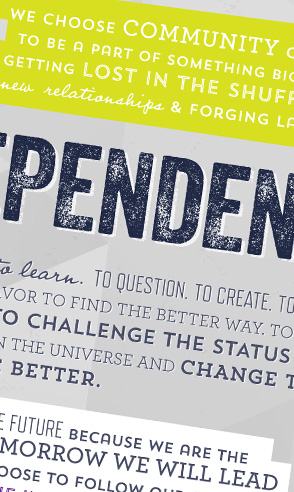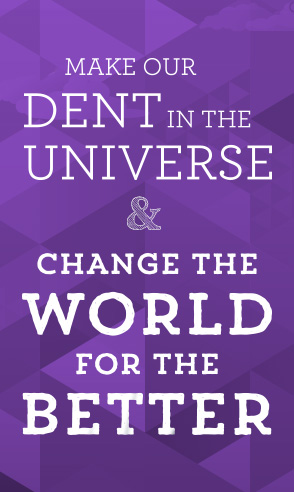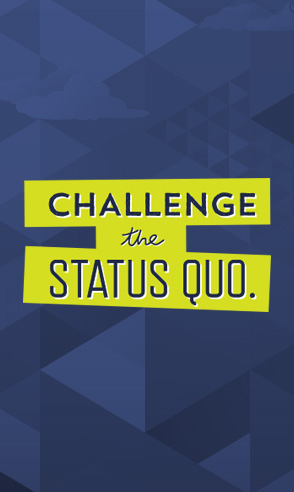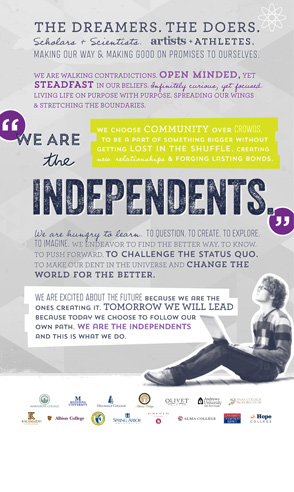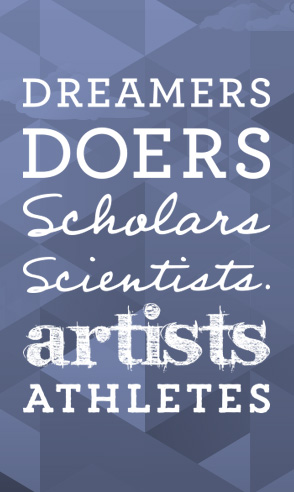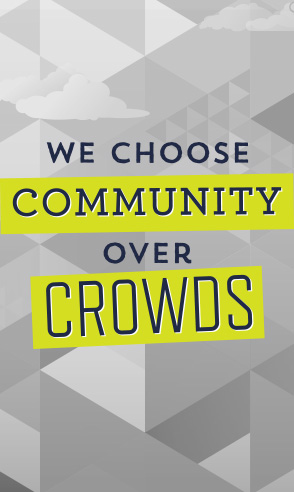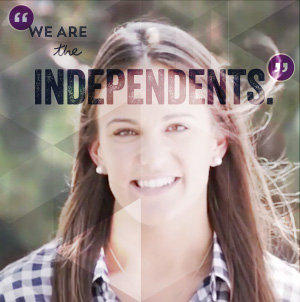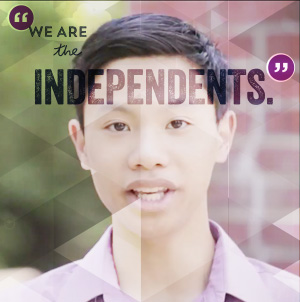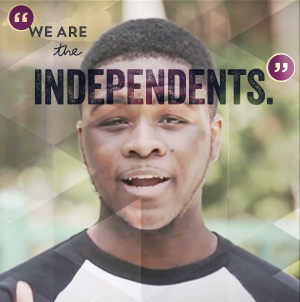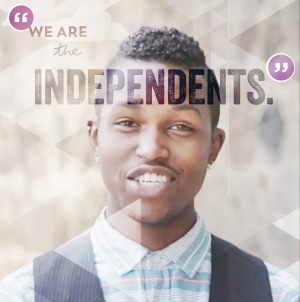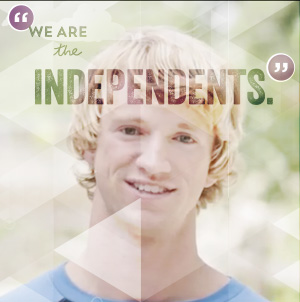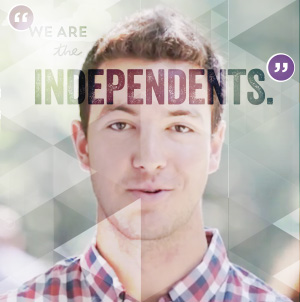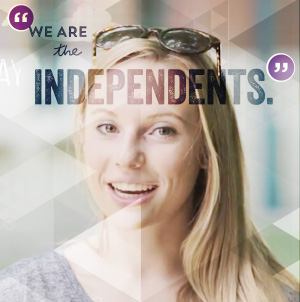Blog - Category: fun
Virtual Kitchen Serves Recipes and Connects Students
Originally posted at http://www.kzoo.edu/news/virtual-kitchen/
Written by Andy Brown.
A cooking show served with a dash of Kalamazoo College is available to students this term. If you’ve ever wanted student-suitable ideas for easy-to-make, inexpensive, palate-pleasing meals that offer a change of pace and a variety of flavors, make sure to tune in.
Every Thursday, from 6 to 7 p.m., MacKenzy Maddock ’22 leads K’s Virtual Kitchen via Microsoft Teams through the Office of Student Activities (OSA). In each show, at least one student staff member cooks meals while talking with other K students.
“I make a new meal every week and try to pick affordable ingredients as well as try to include options that are vegan and vegetarian friendly,” Maddock said. “My goal is to include as many students as possible and consider their financial capacity, accessibility to resources, and interests in food. Students that participate have the option to get a cooking kit provided by the school which includes utensils used in the kitchen.”
Masoor dal, a spicy Indian red lentil soup, was a recent featured recipe prepared by Alaq Zghayer ’21, and students can expect such diverse dishes in future editions of the Virtual Kitchen.
“I’m working on diversifying the event to be more inclusive to other cultures, religions and groups of people on campus as well as to just learn about other kinds of food,” Maddock said. “I’m doing this by collaborating with the many student organizations we have on campus, and I’m excited for what the next few weeks are going to be like. I think the event is constantly developing and I would love for more participants every week.”
The event’s evening time slot makes it accessible to students across the country. Recordings make it available to students around the world. Students can register for each Virtual Kitchen by emailing k18mm01@kzoo.edu or messaging Maddock on Teams to receive access to the cooking channel, which includes previous editions to the show as well.
“I would like to think that this event is an easy way to socialize while doing something that you need to have to survive, food,” Maddock said. “I also think cooking is a huge thing that brings people together and I think that is something that is really necessary right now.”
Maddock, a double major in chemistry and psychology and a volleyball player, understands the need to unplug from a busy schedule. “I am trying to make this space a safe place to decompress after a long day of work, school, sports, etcetera, and I think that that is really worth it to the students that participate.”
Community. It’s what sets apart Kalamazoo College and Michigan’s other top 15 private colleges and universities.
They’re not merely in towns and cities. They are an integral part of their fabric, reaching beyond campus walls and greens to improve the lives of those around them.
It’s one of many differences with traditional universities.
Unlike big state schools, class sizes are small and taught by incredible faculty who help students forge their own path.
They have a deep and committed network of alumni who help after graduation. It’s an experience that simply isn’t available at traditional universities.
And despite what you may have heard, independents are often less expensive and boast higher four-year graduation rates than four-year institutions.
Be bold. Be different. Go independent.
Coolest College Mascots Aren’t Just at Big Universities
It’s National Mascot Day, where we celebrate the fun, sometimes feathery or furry creatures who entertain us and build team spirit at sporting events.
Lists of top college mascots often begin and end with big public universities (Hello Puddles the Oregon Duck), sometimes with a few curveballs thrown in (pleased to meet you, Scottsdale Community College Fighting Artichokes.)
But it’s not just big public universities that have fun with their sports and mascots. They’re just as beloved at independent colleges and universities as well. Let’s meet some Michigan favorites:
Dutch from Hope College
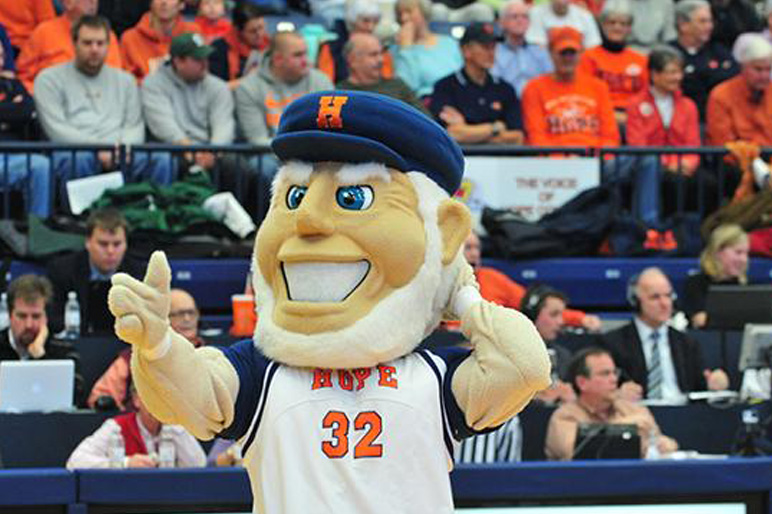
Ruggedly handsome. And what a hat! The mucho macho mascot of Hope College was created during the 2006-07 academic year for the school. Fun fact: His face is loosely modeled after a mailroom employee, Bob Bos. Founded by immigrants from the Netherlands, Hope College became known as the Flying Dutchmen since 1959 when its basketball team took a DC3 to a tournament. The women’s teams are known as the Flying Dutch. Of course.
Tommy Titan from the University of Detroit Mercy

Ever try running 3.1 miles in a warrior helmet and bracelets? It’s not easy. But it’s nothing for Tommy Titan, the beloved mascot from the University of Detroit Mercy who for 28 years has had a 5K run named in his honor every November. Top that off with all the excitement of representing #DetroitsCollegeTeam, and life is pretty good for Tommy Titan.
Calvin Knight from Calvin University
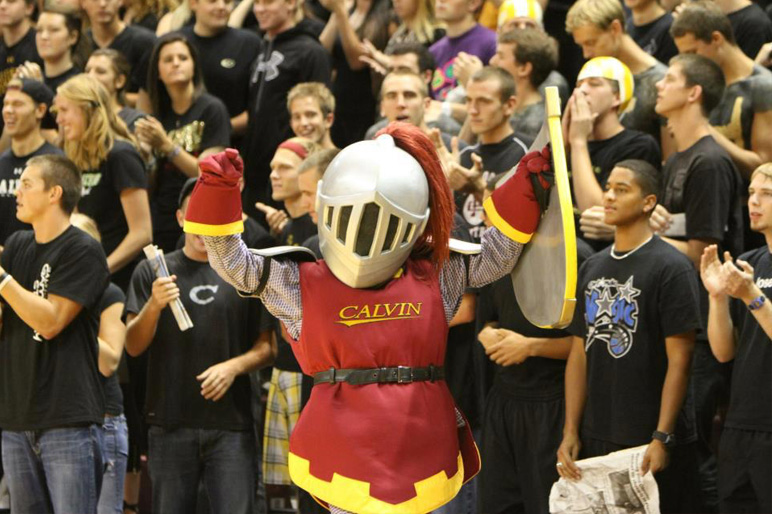
He stands for chivalry, honor and integrity. Sure. That’s true now. But he originally stood for misunderstanding. Calvin University’s mascot, the Knights, emerged in the late 1920s when a reporter from the Grand Rapids Press heard the school was populated by “Calvinites.” Ugh. Bad pun. We know. Like their counterparts at Hope, Calvin students wanted a real mascot and got one after a Facebook campaign began in the mid-2000s. Calvin Knight debuted in February 2009.
Brit the Briton from Albion College
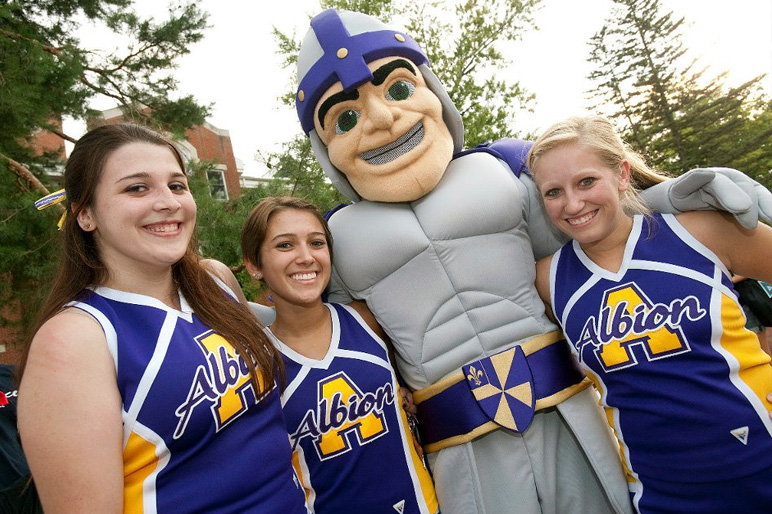
Albion College debuted this rugged fellow in the fall of 2011. The first mascot in 176 years at Albion, he was chosen, because he represents the college’s “longstanding tradition of dignity, discovery and professionalism.” He also looks smashing. Brit looks like he and Tommy Titan would be a formidable duo at tug o’ war.
Scotty from Alma College
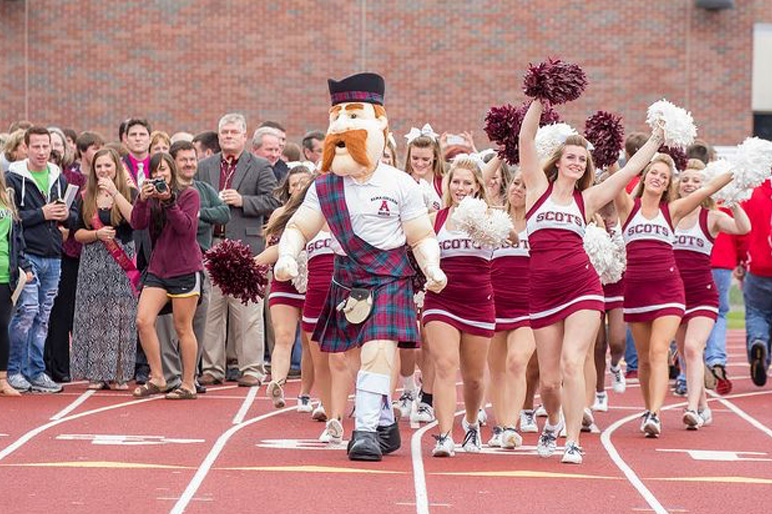
He’s got a mustache that would make Yosemite Sam jealous and Scotty from Alma College is a whole lot easier to cheer for than the “Fighting Presbyterians.” It sounds like a joke, but that was Alma’s mascot until 1931. Hard to believe as it was, but students tired of shouting, “Go Fighting Presbyterians” at football games and the student newspaper launched a three-week contest for a replacement. The winner got $5. Cold hard cash. A few years ago, Scotty got a makeover before homecoming. He’s never looked better!
Buzz the Hornet from Kalamazoo College
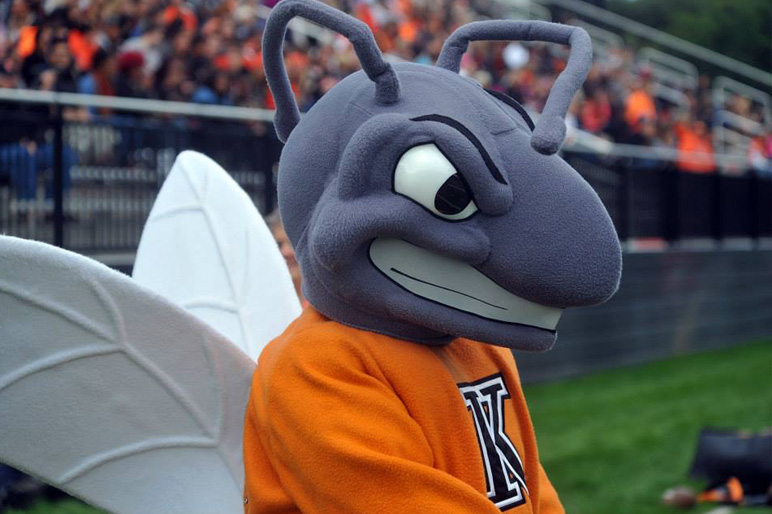
Power of the press! Kalamazoo College’s mascot got its name from – you guessed it – a newspaper reporter, this time from the Kalamazoo Gazette who said thought the football team was “buzzing around enthusiastically and stinging the opponents.” A mascot was born in 1925. Before then, athletic teams were occasionally called the Orange and Black, or even the Kazooks!
Nelson from Aquinas College
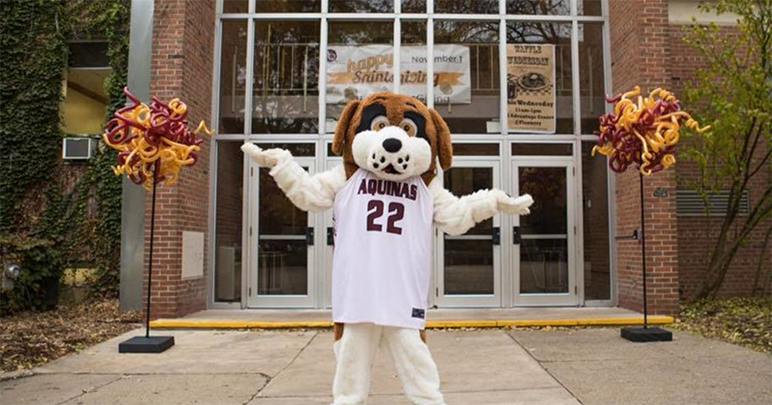 Aquinas College is known as the Saints. Their mascot is Nelson, a Saint Bernard named after the college’s fourth president, Paul Nelson.
Aquinas College is known as the Saints. Their mascot is Nelson, a Saint Bernard named after the college’s fourth president, Paul Nelson.
Charger from Hillsdale College
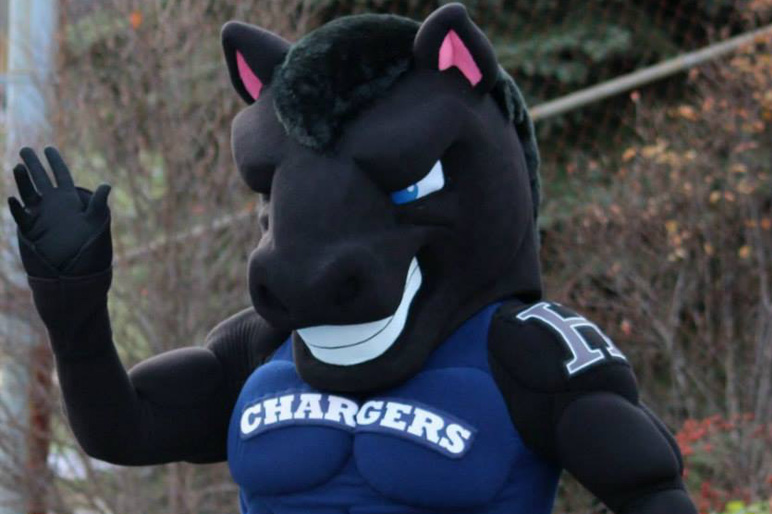
Hillsdale College students got tired of lacking a true mascot about 10 years ago and chose a horse over contenders such as a lightning bolt to represent their nickname, the Chargers.
Bruiser the Bulldog from Adrian College
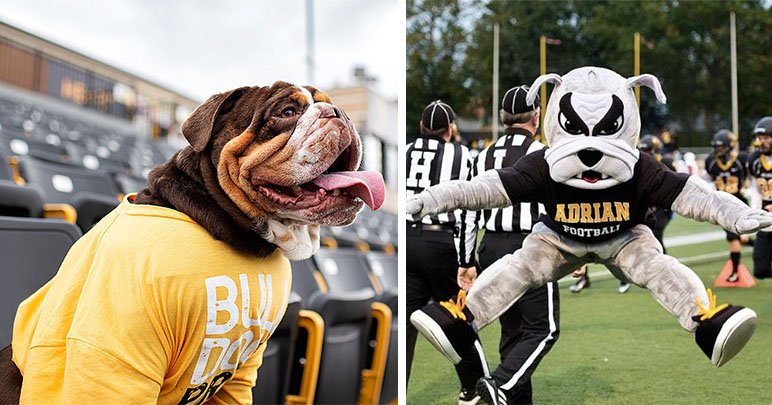 There are 36 colleges across the nation who have a Bulldog as their mascot and 16 of those schools have live mascots. But not many mascots can say they have a mascot. Bruiser the Bulldog can. Adrian College‘s adorable pup Bruiser soaks up the limelight and tummy rubs at campus events, hockey games and football games. But when the big dog on campus needs a break, a giant foam Bruiser mascot costume springs into action.
There are 36 colleges across the nation who have a Bulldog as their mascot and 16 of those schools have live mascots. But not many mascots can say they have a mascot. Bruiser the Bulldog can. Adrian College‘s adorable pup Bruiser soaks up the limelight and tummy rubs at campus events, hockey games and football games. But when the big dog on campus needs a break, a giant foam Bruiser mascot costume springs into action.
Cruzer the Crusader from Madonna University
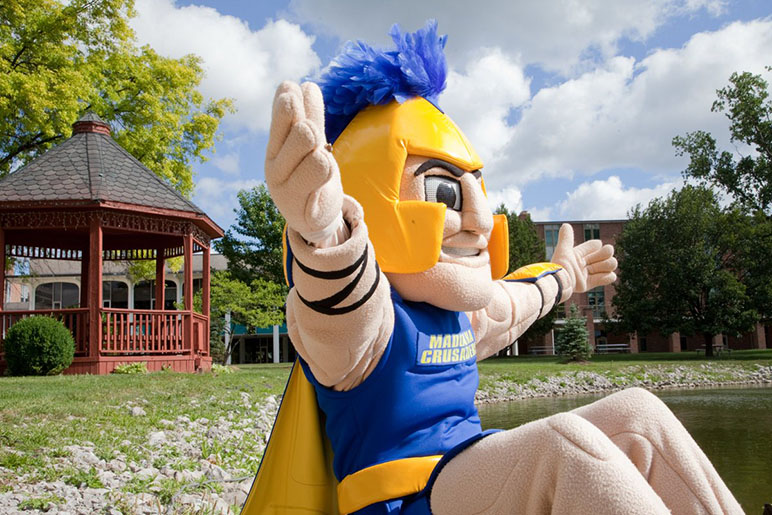 Madonna University debuted Cruzer in 2017. Cruzer enjoys cheering the Madonna Crusaders to victory, showing off his dance moves, and shooting hoops.
Madonna University debuted Cruzer in 2017. Cruzer enjoys cheering the Madonna Crusaders to victory, showing off his dance moves, and shooting hoops.
Haley and Cylde from Olivet College
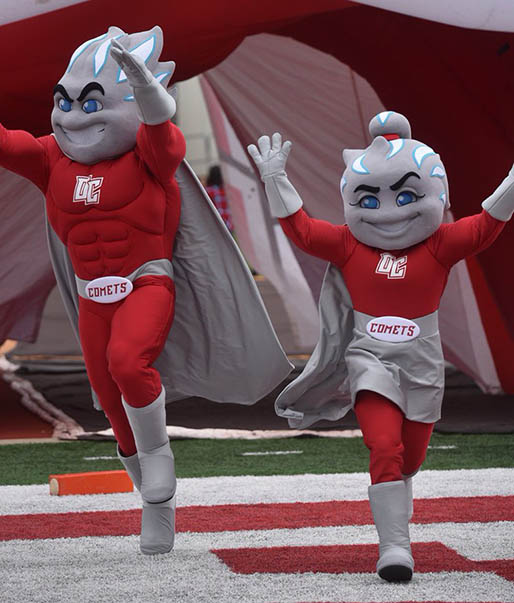
Over the years, Olivet College has had several unofficial mascots including a number of dogs and even a sheep. But in 1932, students and faculty were invited to submit names that signified action, speed and mobility – with the eventual winner being the Comets. Clyde the Comet has long been the Olivet mascot; but in 2018, Olivet introduced the first female mascot to ever represent the school – Haley.
Halo the Husky from Siena Heights University
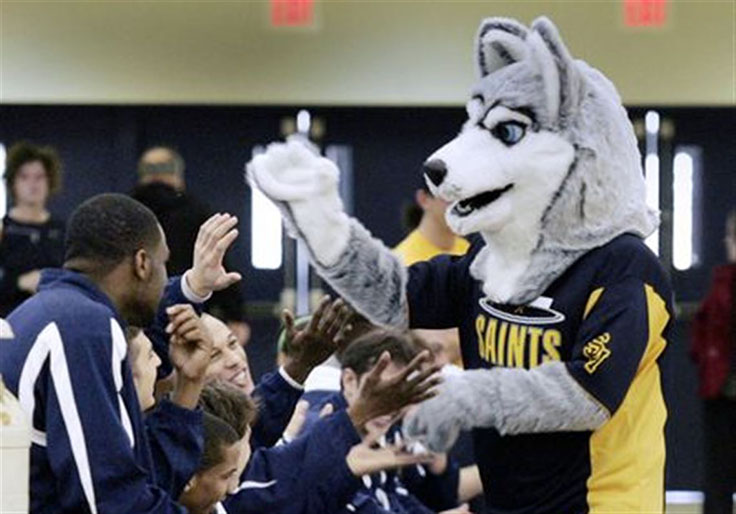
In 2008, Siena Heights University decided it needed a mascot. The school is known as the Saints. But that didn’t seem so fierce. So students voted on an alternative and came up with Halo the Husky, in part to thumb their nose at the Bulldogs of Adrian College, their cross-town rivals. “It’s kind of a shot at Adrian College, the bulldogs, because huskies are stronger and faster,” the student who submitted the winning suggestion said.
That’s just a start of the differences between big public institutions and Michigan’s top 14 independent colleges and universities, where students forge success by following their own path. The colleges are smaller and emphasize community over crowds. Often less expensive than public institutions, the independents boast higher four-year graduation rates and smaller class sizes for a truly unique and affordable experience.
Be bold. Be different. Go independent.
When is the best time to visit colleges?
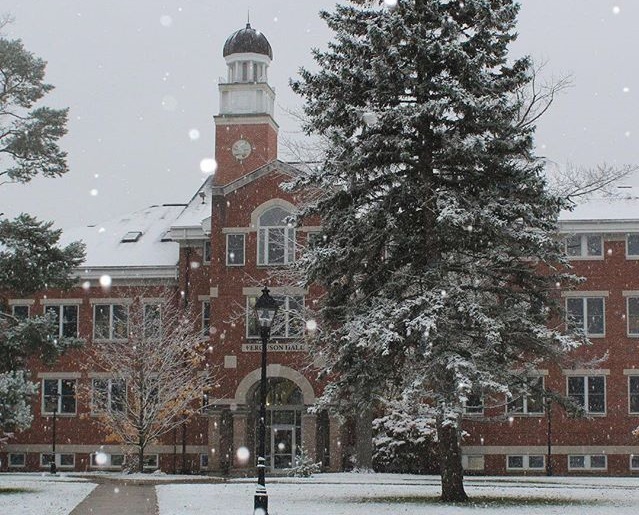
(Albion College, voted 12th Most Beautiful College in Winter)
It’s winter, and the tundra is setting in – at least it is here in Michigan. The last thing you are thinking about is planning a trip to visit campuses. Those long walks across snow-covered quads are certainly less appealing when the temperatures are teetering at the same level as the number of layers you’ll be wearing to stay warm. Or maybe you are a freshman or sophomore, and it’s just “not time yet.”
So, “When is the best time to visit?” The answer may not be what you expect. Here are some tips for getting the most out of campus visits:
Time of year:
As summer strolls in and the school year winds down, families across the country are gearing with plans to visit college campuses. Tours are crowded, staff is minimal, and quads are relatively barren. Although the summer months are more convenient for your time, ideally you should try to plan your visits when classes are in session and the campuses are full of life. Think of it like trying on a pair of new shoes: do you get the proper assessment while sitting? No, you get up, walk around, and perhaps jog in them… as it should also be done visiting campuses. Simulate the day-to-day as if you are attending the school. It doesn’t necessarily mean go in the dead of winter, but consider this: it may be cold, but it’ll also be cold while you attend, won’t it?
Age of student:
It can be very rewarding to visit colleges and universities before your junior and senior year (read: before it’s decision time). You are less concerned about choosing and “buying” when you are simply “window shopping” and more interested in checking out the inventory. Expose yourself to as many different kinds of places—big schools, small schools, research universities, liberal arts colleges, urban campuses, places way out in the country—to develop a broad perspective of all the different options. Then, when it is time to make a decision, you’ll have a better foundation on which to choose.
Before stepping foot on the first campus (and each one after that…):
Your new mantra: Relax, enjoy, decide later. Resist the impulse to judge immediately, good or bad. Your first reaction is bound to be emotional, and usually overly positive—college is really cool! Sleep on it. Weigh your impressions against the other schools you visit and try to remain as objective as possible so your rose-colored glasses don’t allow you to overlook things.
How to choose:
As you visit the campuses, allow your senses to guide you. Really like something? Take note of it. Feel like something’s missing? Take note of it. Gut instinct is usually pretty accurate. Additionally, the perceptions from your visits will come in handy when completing your college applications. Remember this: tying personal experience to the campus environment will blow the minds of the admissions department!
What to look for:
Focus on fit. We perform at our best when we have a level of comfort, belonging, and value. Questions to ask yourself: How does the college meet my academic needs? Will I be challenged appropriately? Is the style of instruction a good match for how I learn? Does the college offer a community that makes me feel “at home?” Does the college offer extracurricular activities that interest me?
After the visit, before you leave:
Connect with the recruiter. Colleges and universities typically assign admissions personnel to different areas of the country for recruiting efficiency. If your area’s recruiter is available, definitely introduce yourself. Either way, get that person’s contact information. Consider him/her as your “go to” person when you have important questions later in the admissions process. And remember this: there is nothing insignificant nor too embarrassing to ask. The admissions staff is there to help!
What to do next:
Record your visit. Make notes as soon as you are able. The more campuses you visit, the more they will begin to blend together, especially from memory. Take pictures to give yourself a visual index of what you’ve seen to avoid confusion later.
And finally:
Enjoy the process. It can be easy to get lost in the excitement and have that energy turn into anxiety. Relax. Start the search early. Visit during the school year to witness the campus’s true environment. Trust your senses and take notes.
As you map your college visit road trip, include a few of Michigan’s top 14 private colleges and universities on your list. These schools are purposefully smaller and emphasize “community over crowds.” Often comparable in cost to Michigan’s public institutions, the independents boast higher four-year graduation rates, outstanding faculty who help students forge their own paths, and smaller class sizes for a truly unique and personal experience.
Be bold. Be different. Go independent.
How Michigan colleges and Google are Reinventing Classroom Learning

When Alma College Professor Anthony Collamati sat down with all the students in his winter semester Media Theory and Culture class for the first time, the course was almost over.
You read that right.
Collamati was part of a revolutionary pilot program led by the Michigan Colleges Alliance that allowed students at Alma, Albion and Calvin colleges to take courses at member campuses using video conferencing technology from Google and interactive 55-inch “jamboards” to communicate.
That means Collamati had seven students in a classroom at Alma, six Albion undergraduates dialed in from their campus and three from Calvin attending from Grand Rapids.
The collaboration between the Michigan Colleges Alliance — a group of 14 of Michigan’s best private colleges and universities working together to provide opportunities for students in and outside of the classrooms — Google, which donated technology, and Steelcase, which outfitted learning environments for optimal communication, is the first-of-its-kind nationally.
The idea behind the interactive multi-campus class sharing is to maximize limited resources and provide students wider learning opportunities, said Michigan Colleges Alliance President Dr. Bob Bartlett.
“Nothing like this is happening in the country other than right here,” Bartlett said recently to students and instructors involved in the pilot. “It’s cutting edge. You’re a part of something brand new and it’s happening right here in Michigan and with Michigan Colleges Alliance.”
“We’re on to something that is going to have a national scope. I think that’s pretty exciting.”
Students agreed with Bartlett’s assessment.
Nichole Brown, an Albion junior studying math, was part of Collamati’s class. She registered for the section specifically to experience and learn the technology. Brown said any initial skepticism ended with the interactive nature and excitement of being part of something new.
“This is opening up opportunity for students to take classes we’ve never had access to and to be a part of something that’s never been done,” Nichole said. “Technology has such a wide range of applications in other fields that learning it now will benefit me later.”
The pilot was structured around three classes that are unique to the school or typically have lower student registrations. Bartlett said the courses, “Earth, Art and the Environment” offered through Albion, “Visual Sociology” through Calvin, and Collamati’s, were chosen to highlight that the program could tackle demanding topics.
Collamati described building a close connection to and between the students despite the distance between the campuses. He and the students had to lean-in and engage each other, developing seminar-style robust discussions. Each class session felt like an event, Collamati said.
“It supports the type of personalized teaching that we value and know is most valuable,” Collamati said.
Collamati reflected on the recent lunch at which he physically met two-thirds of his students, saying it didn’t feel like their first encounter.
“I knew their personalities just like I would if they had been sitting in front of me the entire semester,” he said.
The colleges are studying how to improve the experience while planning to expand the partnership in Fall 2018 to include seven classes. Roman Williams, a Calvin College sociology professor who taught one of the three pilot classes, said the evaluation will help all parties understand the program’s strengths and how it can develop.
“We have a hunch that there are two entirely different experiences when you’re in class and when you’re video-conferenced in,” he said. “What are those differences? How did the student react and how did the professor adapt? I know, for me, the technology forced me to reinvent some of the ways I taught and I think it challenged everyone for the better.”
The second edition of the collaboration will focus on more traditional math and science courses to explore how the technology works in those arenas.
Bartlett praised the institutions for being innovative.
“Our presidents are really visionary and wanted to create something different, something exciting for students,” he said. “I’m amazed at the degree of collaboration that I’ve seen in this process. The way work gets done now is what our students are experiencing in the classroom. Everyone is working together to lay the tracks for our future.”
Adrian Colleges’ Club Baseball Team wins NCBA Division III Championship in their first year of Existence.
The Adrian College Club Baseball team has won the NCBA Division III championship in their first year of existence! Read more about their recent victory here. Go Bulldogs!

Alma College Cheer Team Wins National Championship
The Alma College Cheerleading team won its second consecutive National Cheerleaders Association (NCA) championship this April. Being at the top is a way of life for the Alma Scots cheerleaders. Alma’s cheer program is in its sixth year of existence and has finished second or better in each of its last five appearances at the NCA College Nationals. Way to go Scots!
Hope College Men’s Hockey Team Wins First Ever National Championship
Congratulations to the Hope College men’s hockey team! The Flying Dutchmen claimed their first ever National Championship on March 19th, making the team the American Collegiate Hockey Association D3 Champs!
Make a splash. Follow your own path. Find your future.
Michigan Colleges Alliance takes Second in Stryker Engineering Challenge.
Michigan Colleges Alliance (MCA) and its team of four engineering students finished second out of seven teams in the most recent Stryker Engineering Challenge. MCA competed against six teams from University of Notre Dame, Michigan Tech University, Western Michigan University, Miami University of Ohio, and Purdue University. Michigan Colleges Alliances beat out everyone, except for Michigan Tech University, who took first place in the competition.
Their team was a collective team of engineering students from two of their 14 schools, Andrews University and Calvin College. Levi Vande Kamp from Calvin College and Eric Anderson, Darrick Horton, and Justin Wiley from Andrews University made up the MCA team.
Gunnar Lovhoiden, a professor of engineering at Andrews University, supported the MCA team at the competition.
“I think our team worked really well together. Their design worked well and they represented MCA with honor. Second place—how about that,” says Lovhoiden.
This is the 8th year of the Stryker Engineering Challenge. The competition this year was held on March 22nd and 23rd.
Left to right: Darrick Horton (Andrews), Eric Anderson (Andrews), Justin Wiley (Andrews), Levi Vande Kamp (Calvin). (Photo by Gunnar Lovhoiden, professor of engineering)
Meet Bruiser the Bulldog, Adrian College’s Newest and Most Adorable Mascot!
Alma College Reaches Peak Fun with Bagpipes & Nintendo
![]()
Somewhere, in that rare, elusive air between nerd and cool is peak awesome. Call it alchemy or old-fashioned magic, but sometimes, mixing radically different mediums captures pop perfection.
It happened with Chocolate Chip Cookie Dough Pop Tarts. And it happened again at the end of football season at Alma College, when — prepare yourselves — bagpipes met old-school Nintendo.
The Alma College Pipe Band and Winter Guard joined the school’s legendary Kiltie Marching Band for their annual indoor concert. This year’s concert featured themes from Super Mario Brothers, the Legend of Zelda and other 64-bit hits. It was retro wonderful. Princess Peach even made an appearance. And bagpipes. Lots of bagpipes.
A little background: Bagpipes are a big deal at Alma. They’re played when first-year students step on campus and walk through a gauntlet of faculty members at Welcoming Convocation. They’re played at sports games and college traditions like Burns Dinners and Tartan Day.
And Nintendo? Well, duh.
“I chose this music because it was always with me growing up” says band director David Zurbe. “The more video games I played, the more that I realized what impressive music it was. This music needs to be heard by everyone, and I am excited about how fantastic the musicians are doing with it.”
Making it even better: Students performed in full costume.
Offbeat selections aren’t usual for the band. In 2014, it performed a selection of Van Halen hits.
Is it wacky? Maybe a little. More importantly: Why not? It’s pretty darn amazing and a full heart container of fun.
That’s the way they roll at Alma College and Michigan’s 15 independent colleges and universities, where taking chances, mixing stuff up and letting ideas take wing is a way of life.
Purposefully smaller, the colleges offer a vastly different experience than big public schools. Class sizes are small. Award-winning professors actually teach classes, get to know students and help them chart their own path to rewarding careers.
Often less expensive than public institutions, the independents boast higher four-year graduation rates for a truly unique and affordable experience.
Be bold. Be different. Go independent.

